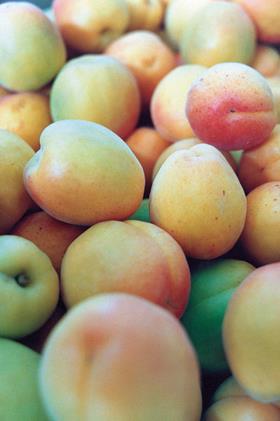
Overall the UK stonefruit market has grown around eight per cent in the 52 weeks to 12 May 2013 – around the same level of growth as the overall produce market.
Much of this has been driven by apricot, nectarine and peach sales, with plum sales staying relatively static over the last three years. For the first time, the biggest spend in the category this year has been on nectarines, which grew 16 per cent from 2012 to stand at £112 million. Peaches and apricots also had significant growth at 33 per cent and
24 per cent respectively (£46m and £22m), according to Kantar Worldpanel.
One industry insider told FPJ: “There are a number of reasons behind the increases. We’ve seen better availability and new lines – particularly in the ripe-and-ready area. There’s been much heavier use of nectarines, particularly in fixed-price promotions and multibuys as we continue the trend away from BOGOFs towards offering deals. And the Diamond Jubilee and Olympic Games also account for higher-than-usual spend within the period.”
On the retail shelves themselves, the winners are the basic and standard ranges as shoppers appear to have moved away to a degree from premium and organic fruit. There continues to be a preference for pre-packed formats, although loose peach sales are showing steady growth. The source adds: “Looking at shopper demographics there is not much differentiation, although generally there are more nectarine and peach sales to smaller households without children and more apricot and plum sales to larger households with children.”
Compared to recent averages, the Spanish stonefruit season – generally running from May to October – started slightly earlier this year, with a strong market for both peaches and nectarines in the UK. However, for much of the last month the campaign has been hampered by continuous cold and wet weather and fruit has struggled to reach the volumes and quality levels usually expected at this stage in the season.
The weather has also been an issue for UK stonefruit and plum trees have been flowering a lot later this year. And relative newcomers to the stonefruit market, UK apricots have been badly affected by the frosty weather throughout their flowering period, with fruit now not expected until mid-August.
One UK packer said: “It’s not all bad news though – you only need a couple of weeks of good weather and things will be back on track. The plum crop is looking to be very heavy this year and fruits will begin to be harvested at the end of July.”
In Spain, official forecasts from the association of co-ops, Co-operativas Agro-alimentarias, point to a 13.5 per cent increase in volume this year across the whole category nationally with nectarines up 22 per cent year on year and peaches and flat peaches up 17 per cent. The regions of Aragon, Valencia, Catalonia and Andalusia all show uplift on a year ago compensating for a fall in output from Extremadura.
Summerfruit SL is a producer-exporter with some 500ha of stonefruit and other fruit lines under production in Catalonia and Aragon. Ramon Pascual is sales and marketing manager and explains that this year has been difficult so far. “The rain and wind we had in mid-May affected quality and therefore the volume we could send to market,” he says. “We had about three times the normal rainfall levels in our region in May. We also had the coldest May since 1985.” The result is that some varieties are running up to a month later than usual.
One ray of sunshine for Spain’s growers though is the growing popularity of flat peaches and flat nectarines, known as paraguayos and platerinas respectively. Pascual said: “I think they are so successful because quality is homogenous throughout the season in terms of flavour and appearance.”
His comments are echoed by Ignacio Gonzalez, commercial director at Treecoop, a co-operative in the Lerida area of Catalonia. “Over the last seven to eight years, breeders have been working to find varieties that deliver uniformly consistent red skin, consistently white flesh and sugar levels right from the start of the season in June until it ends in September. That is why I think they are popular with consumers as they know that whenever in the season they buy them, they will meet their expectations.”
Murcia, in south-eastern Spain, is the first region to come on stream and as a result its extra-early crops were punished by the poor spring weather, although recovery on the part of early varieties means that the overall decline in volume should only be about 10 per cent.
Fermín Sánchez Navarro, managing director at the Gruventa group of growers and exporters, which is based in Murcia, says: “We are very pleased with the stonefruit season, and a very fluid market demand which is being seen in operations in international markets.” He added that he would like to see a national quality marque in order to differentiate Spanish stonefruit from that of other countries.
“It would be a huge step for the whole industry,” says Sánchez. Of course one of Spain’s biggest competitors is France and with Italy, these three countries provide the mainstay of stonefruit output in Europe.
The French, too, are looking to differentiate their offer and have the largest market for peaches and nectarines domestically as France is itself the single biggest consumer of these two lines in the whole of Europe. France grows 250,000 tonnes of peaches and nectarines and has some 12,000ha under production.
The story is similar on apricots – France’s third-largest fruit crop behind apples and the combination of peaches and nectarines.
This year producers are grouping together under the banner Abricots de Nos Régions and Pèches de Nos Regions to promote domestic supplies of apricots and peaches respectively and some activity has also been added for export markets with an inbound press trip and English-language buyers’ guides. —